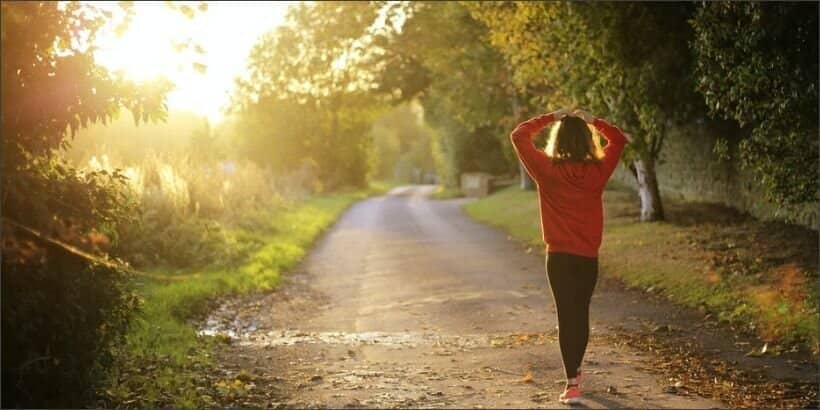Chelsea Green’s Guide to a Healthy Year: New Year, New You

Did you start the new year off with a health-inspired resolution? Are you trying to eat better and exercise more? Or looking to improve your digestive health and—by extension—your physical and mental well-being? We have blog posts that will help you with your health and wellness journey!
Take a page out of some of our health & wellness books for more inspiration!

Does the word “medicine” conjure up images of viscous syrups and pills that leave a bad taste in your mouth? Good news! We have a recipe that is both delicious AND medicinal. Jill Stansbury’s anti-inflammatory smoothie uses natural (and tasty!) ingredients to help reduce inflammation caused by any number of circumstances. Turns out, you DON’T need a spoonful of sugar to help the medicine go down.

With a little bit of fermenting technique, ginger carrots will be your new go-to snack! They are pretty pricey at natural food stores so learning to make your own will surely be worthwhile as long as you can wait the 2 to 4 weeks they take to ferment. Waiting that long really is the hardest part of this recipe!

Life can be stressful! Sometimes there’s just no avoiding it. Luckily, taking a moment to brew and enjoy a cup of tea can actually help quite a bit– especially if you’re brewing a cup of Jill Stansbury’s Tea for Stress-Related Muscle Tension. So next time you’re feeling stressed, take a break and brew some tea. Better yet, brew this tea before you’re stressed out as a preventative measure.

Inspired by a combination of his work treating patients with autoimmune disease and working in his garden, Dr. Cowan has developed six principles to help patients create healthy, natural diets. He emphasizes the importance of sourcing quality food from your immediate environment and consuming the correct macronutrients.

Sometimes, a roadblock or bump in the road can seem like the end of a good idea. The best way to overcome these obstacles is to change the way we view them; asking “how can this help?” as opposed to “is this the end?” can make all the difference in the world. Reframing an obstacle in a positive manner can reinvent the way we look at problems in both our everyday life and on a larger scale.

Many know the effects of catnip on our feline friends, but few realize that catnip has medicinal effects for humans. From stomach aches to reducing fevers, catnip is a versatile herb with many benefits. The next time you grow this plant for your cat you may end up taking a few cuttings for yourself!

Suffering from frequent headaches is miserable and immobilizing. If you haven’t had luck treating and preventing your headaches, skip the manufactured, over the counter approach and prepare a natural remedy for future use! At the end of this post, you’ll find a few of the many herbal therapies Jill Stansbury lists in her book. If you don’t see what you’re looking for here, check out her books for a multitude of remedies for headaches and more!

Leah M. Webb, MPH, obtained her health coach certification from the Institute for Integrative Nutrition. She lives in the mountains of North Carolina with her husband, T.C., and their two children, Owen and June. Owen has a life-threatening anaphylactic allergy to wheat, and June has cystic fibrosis, a genetic disease severely impacting the lungs and pancreas. Leah’s commitment to a restrictive, nutrient-dense diet has played an important role in her children’s integrative care.
In the United States, more than 35 percent of adults and nearly 17 percent of children are obese. This is true in spite of our cultural obsession with diets, exercise fads, and health food. Denis Wilson, MD, faces this issue head-on with an unprecedented science-backed fitness regimen that’s convenient, natural, and adaptable to even the busiest modern lifestyle. In The Power of Fastercise, he draws on the latest medical research to help people loose fat and preserve muscle through a sustainable practice without rigid dieting.

Sleep seems to be the thing that escapes most of us. In a society that praises long hours, we aren’t getting the rest needed for optimal physical and mental performance. Continuously practicing to be the best is an unhealthy myth that drives many athletes. Studies recently conducted are reporting that the best way improve athletic skill isn’t by practicing more, but by sleeping more.

When our stomachs growl, we eat. When we feel like we’re about to burst, we stop eating. These are just two examples of our bodies’ incredible ability to recognize and adjust to changes within our environment and ourselves. Sometimes our bodies even know what’s best for us before we do.

The food you eat has a direct impact on your gut and overall health. Eating sugary foods feeds the bad bacteria in our mouths that eventually lead to health problems down the road. Probiotic foods are the key to taking care of the important good bacteria in our mouths and intestines.
Recommended Reads
Recent Articles
Easy rainbow coleslaw! Transform your salad game with this colorful recipe. It is surprisingly packed with flavor and is a great addition to your repertoire.
Read MoreLearning how to ask questions that will elicit relevant information is as much an art form as creating an herbal formula. Follow this broad list as a starting point.
Read MoreWant to start your own medicinal herb garden? Passionflower, lemon balm, and goldenseal are great places to begin! These herbs are jam-packed with medicinal properties and easy to grow in a majority of climates.
Read MoreSprouts are easy to cultivate, mature quickly and pack a nutritional punch! You can make nutrient-rich sprouts from all kinds of edible seeds in your kitchen.
Read More








